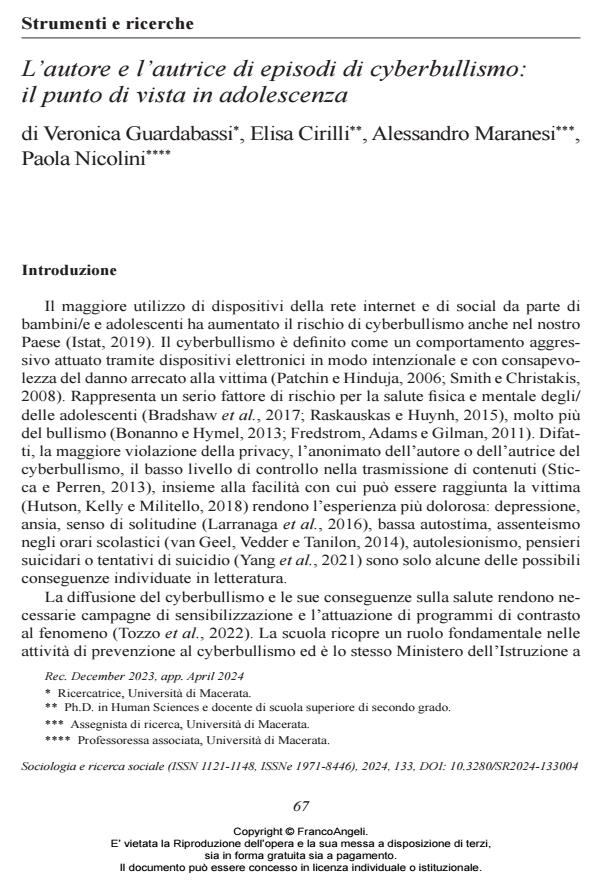The Author and the Per- petrator of Cyberbullying: The Adolescent Perspective (
Journal title SOCIOLOGIA E RICERCA SOCIALE
Author/s Veronica Guardabassi, Elisa Cirilli, Alessandro Maranesi, Paola Nicolini
Publishing Year 2024 Issue 2024/133
Language Italian Pages 23 P. 67-89 File size 262 KB
DOI 10.3280/SR2024-133004
DOI is like a bar code for intellectual property: to have more infomation
click here
Below, you can see the article first page
If you want to buy this article in PDF format, you can do it, following the instructions to buy download credits

FrancoAngeli is member of Publishers International Linking Association, Inc (PILA), a not-for-profit association which run the CrossRef service enabling links to and from online scholarly content.
The spread of cyberbullying and the importance of involving students in reflecting on possible solutions to the problem have led to the implementation of an action-re- search project aimed at understanding adolescents’ perspectives on the identity of the cyberbullying perpetrator. To this end, 601 secondary school students responded to a questionnaire designed to identify the interests, friendships, behaviours, speech patterns, fears, and amusements of the male and female cyberbully. The collected data allowed for the identification of a shared representation and reflection on their differ- ences. Theoretical implications and practical applications are discussed.
Veronica Guardabassi, Elisa Cirilli, Alessandro Maranesi, Paola Nicolini, L’autore e l’autrice di episodi di cyberbullismo: il punto di vista in adolescenza in "SOCIOLOGIA E RICERCA SOCIALE " 133/2024, pp 67-89, DOI: 10.3280/SR2024-133004